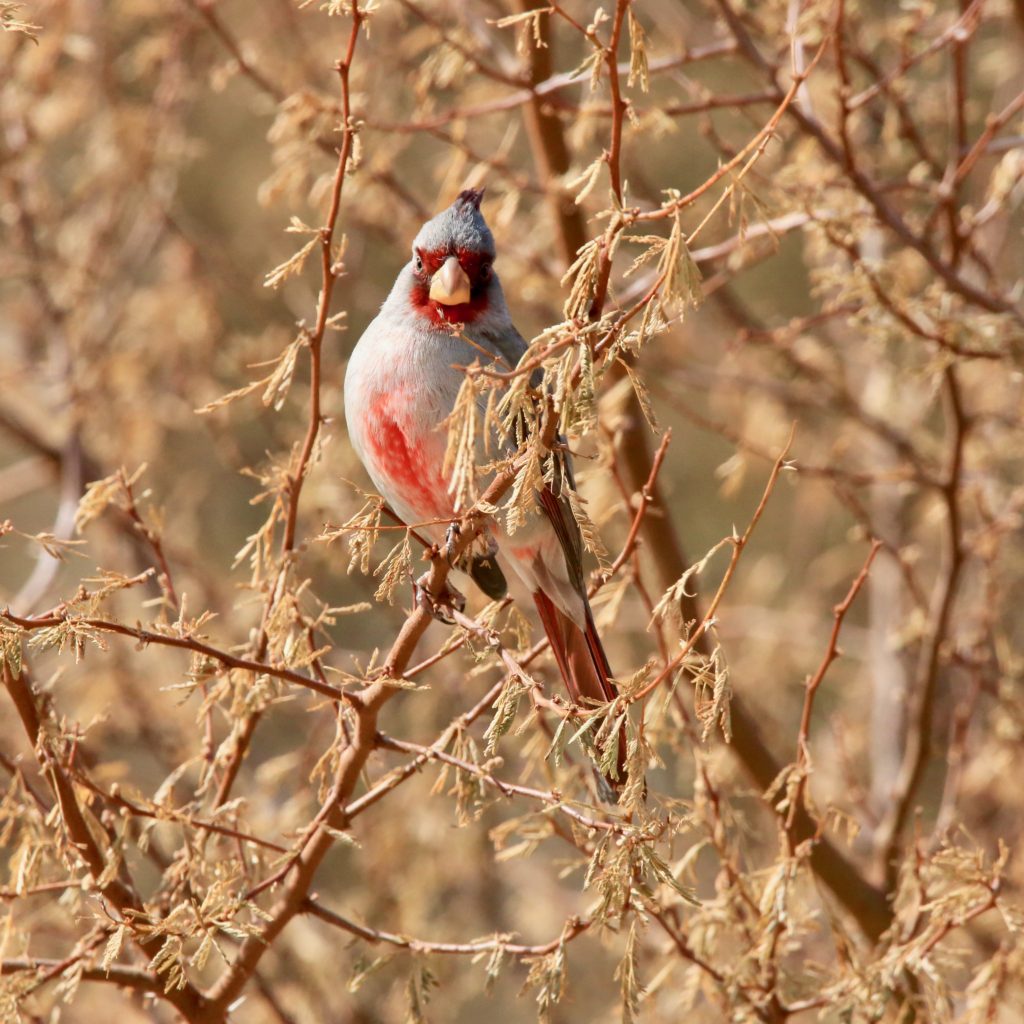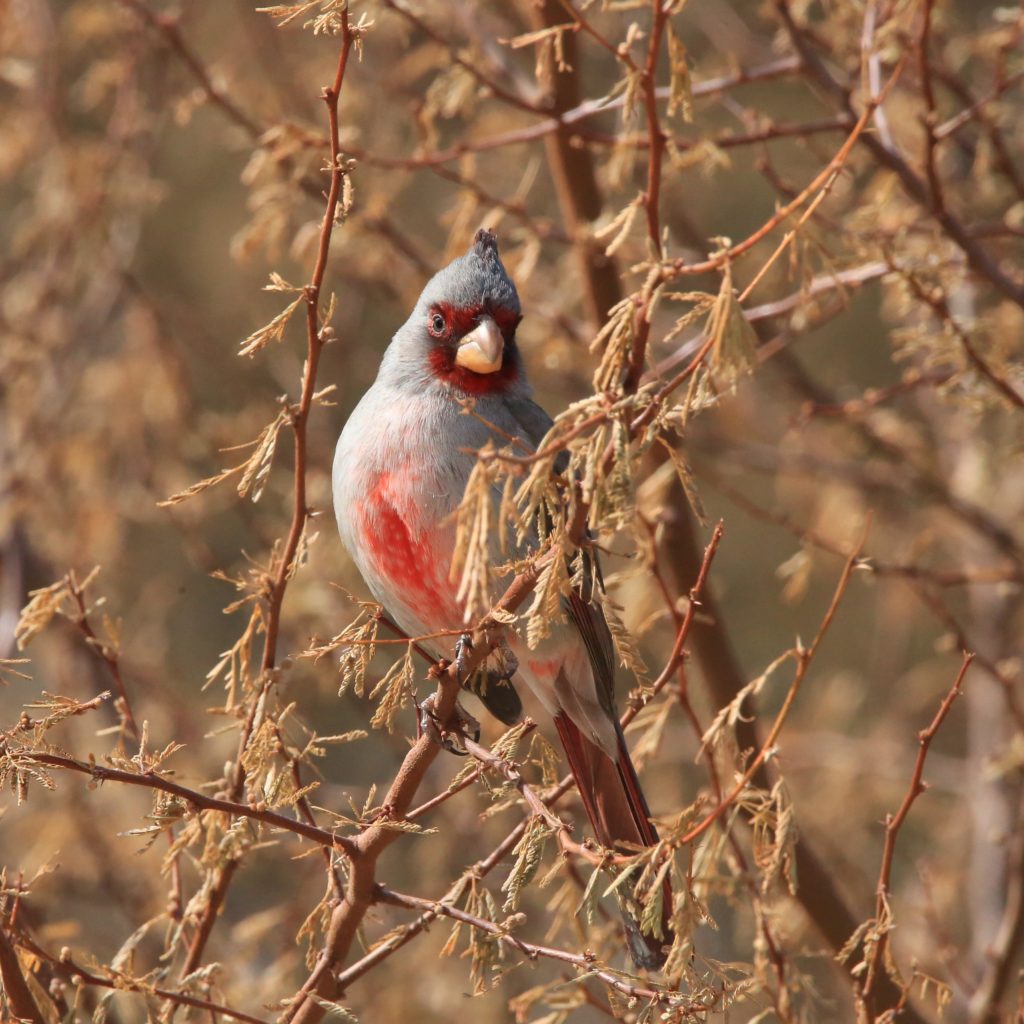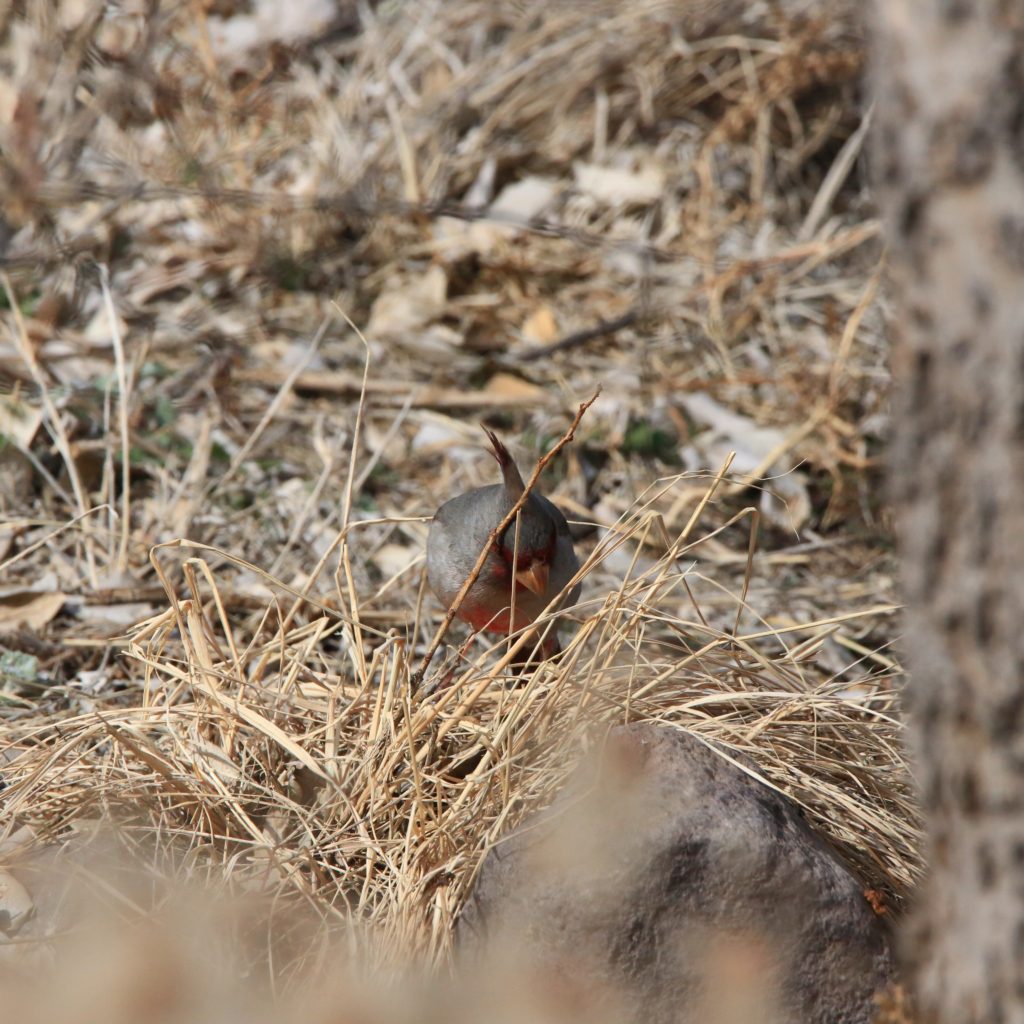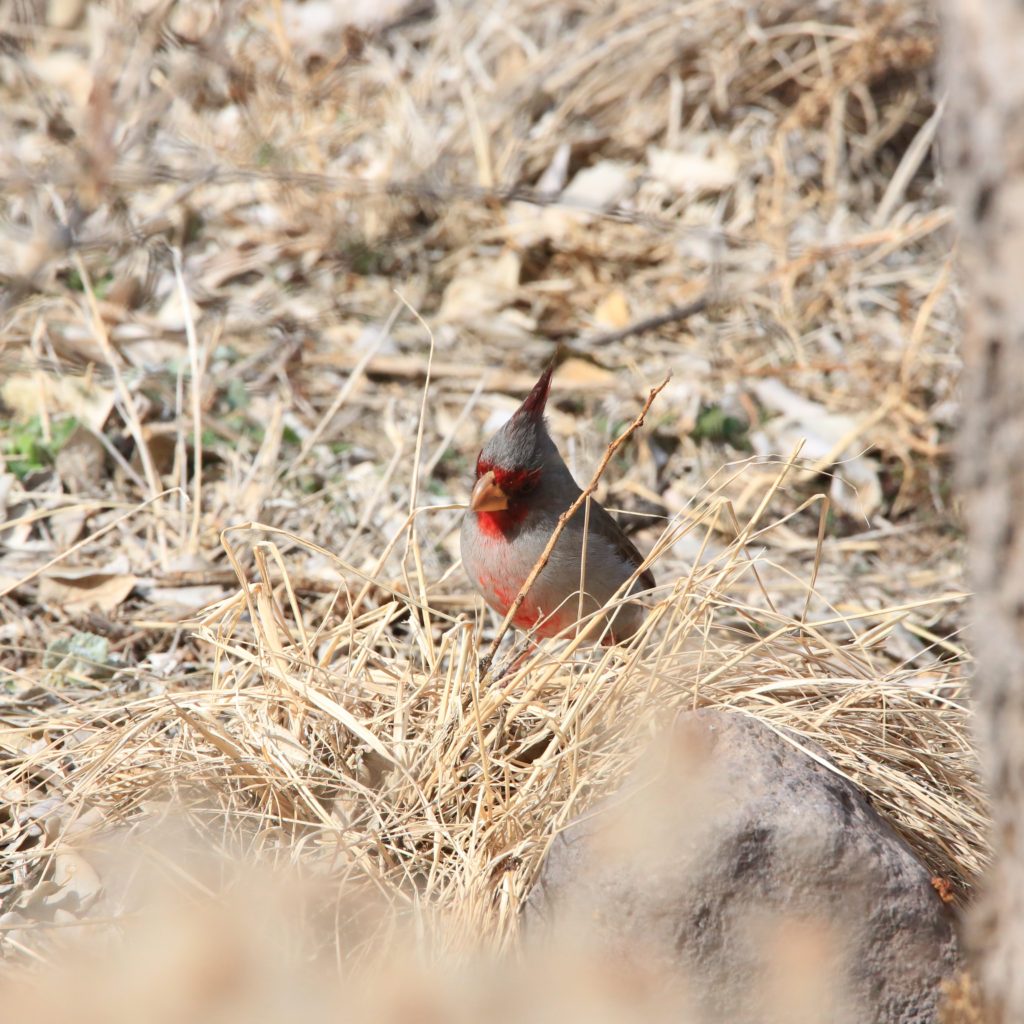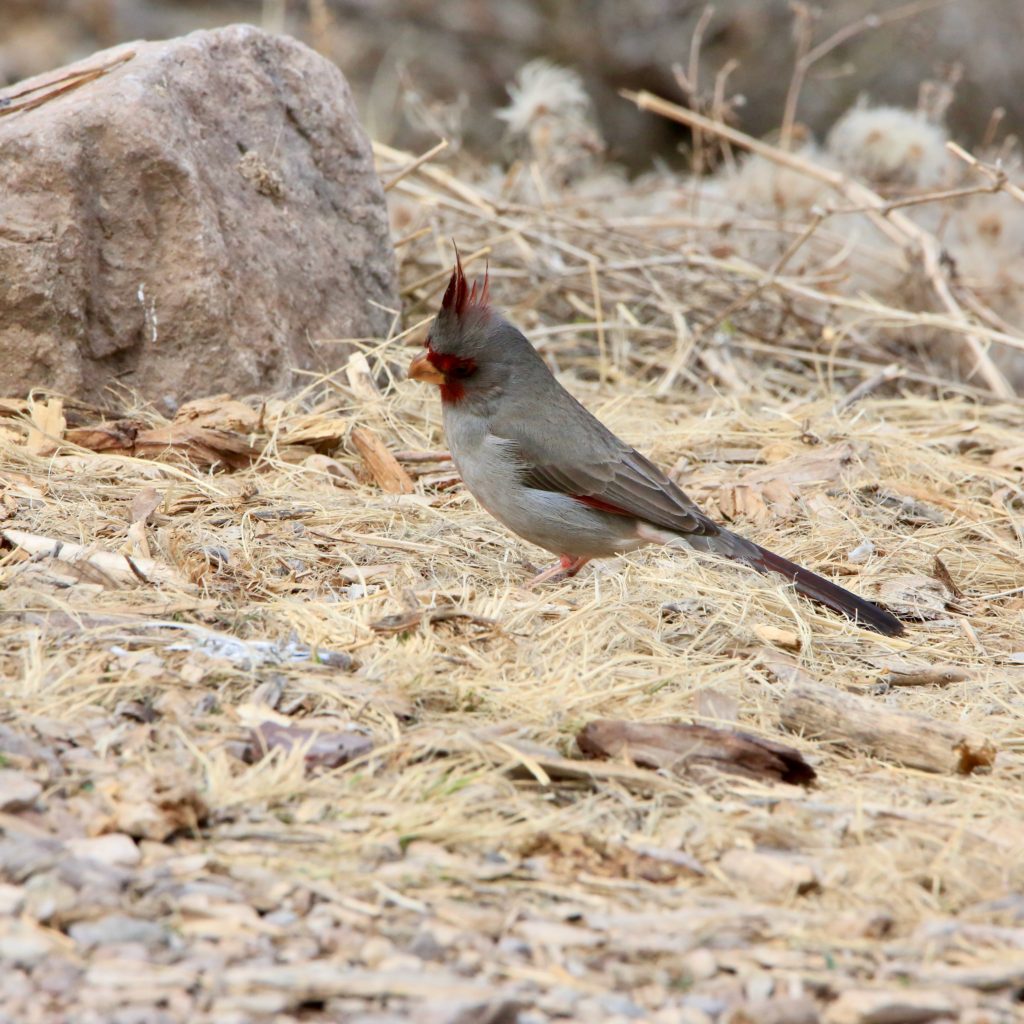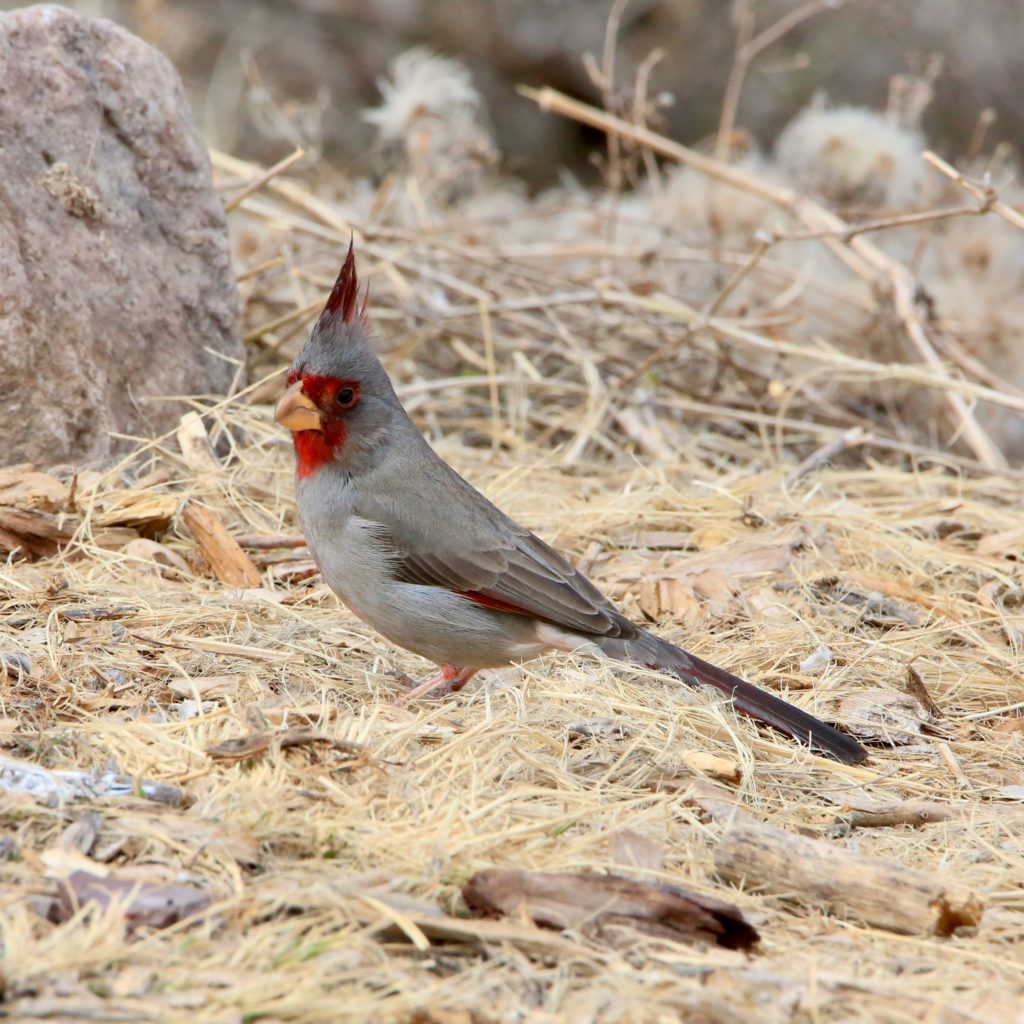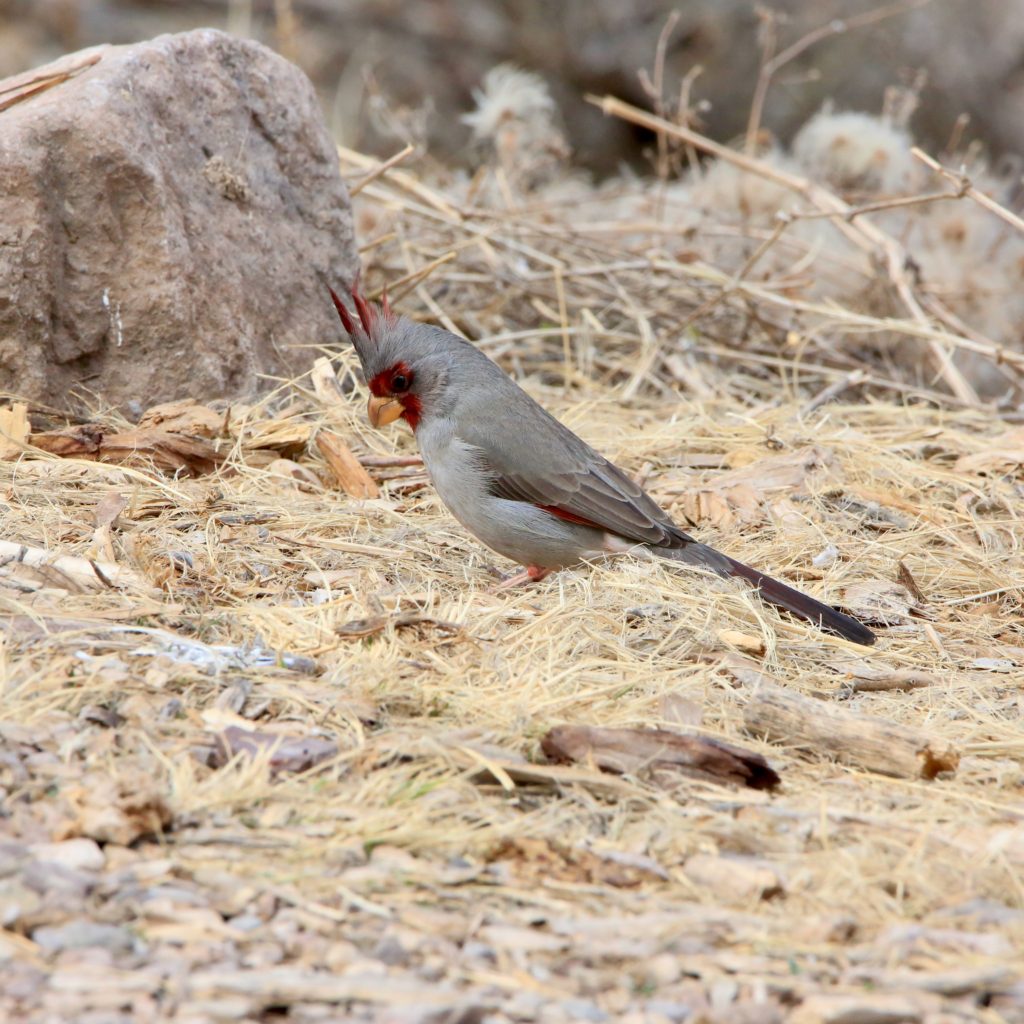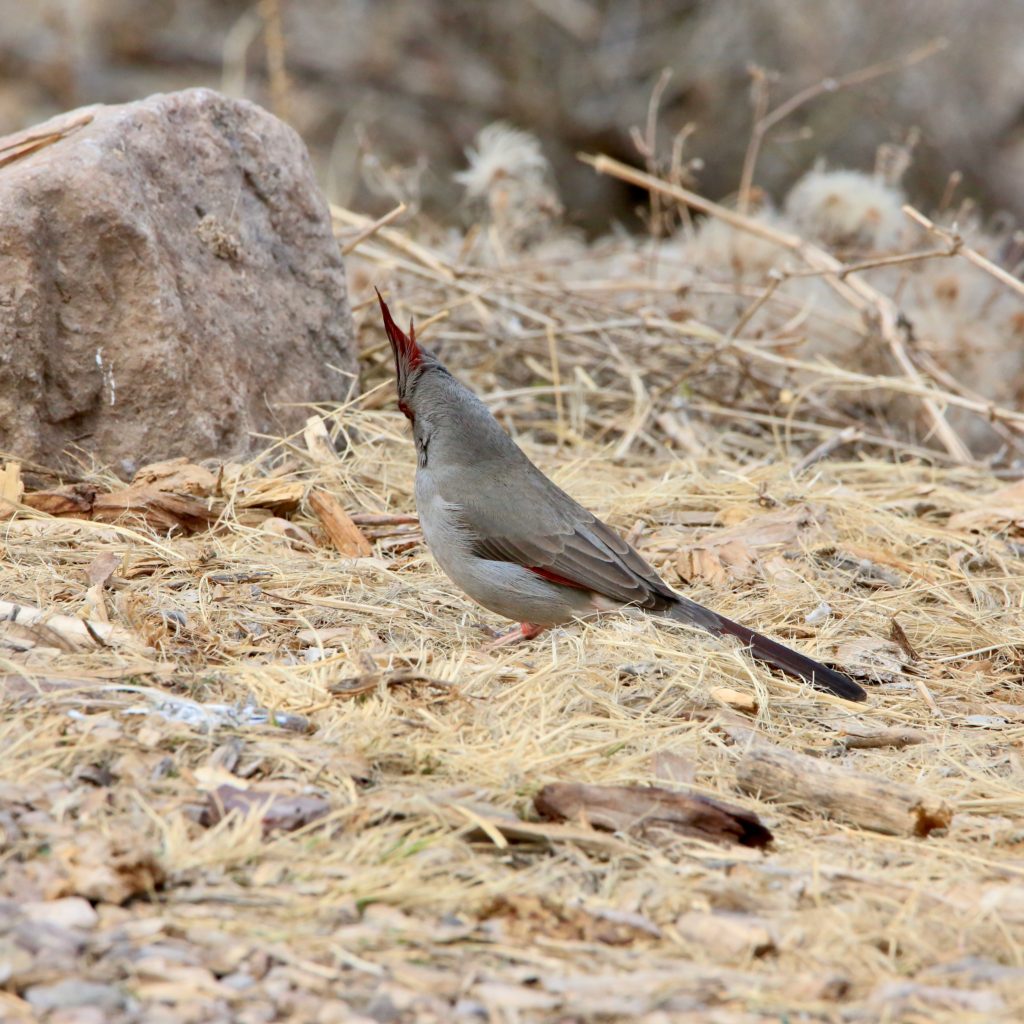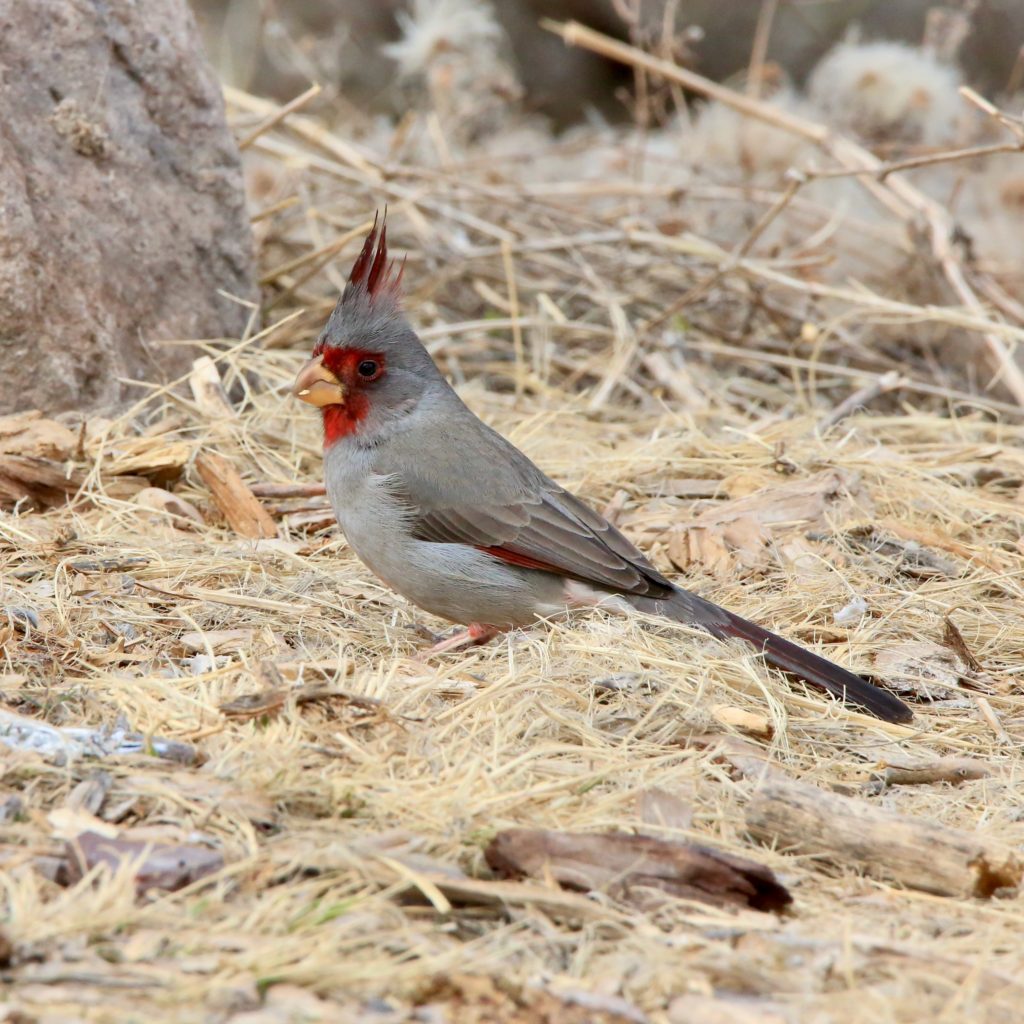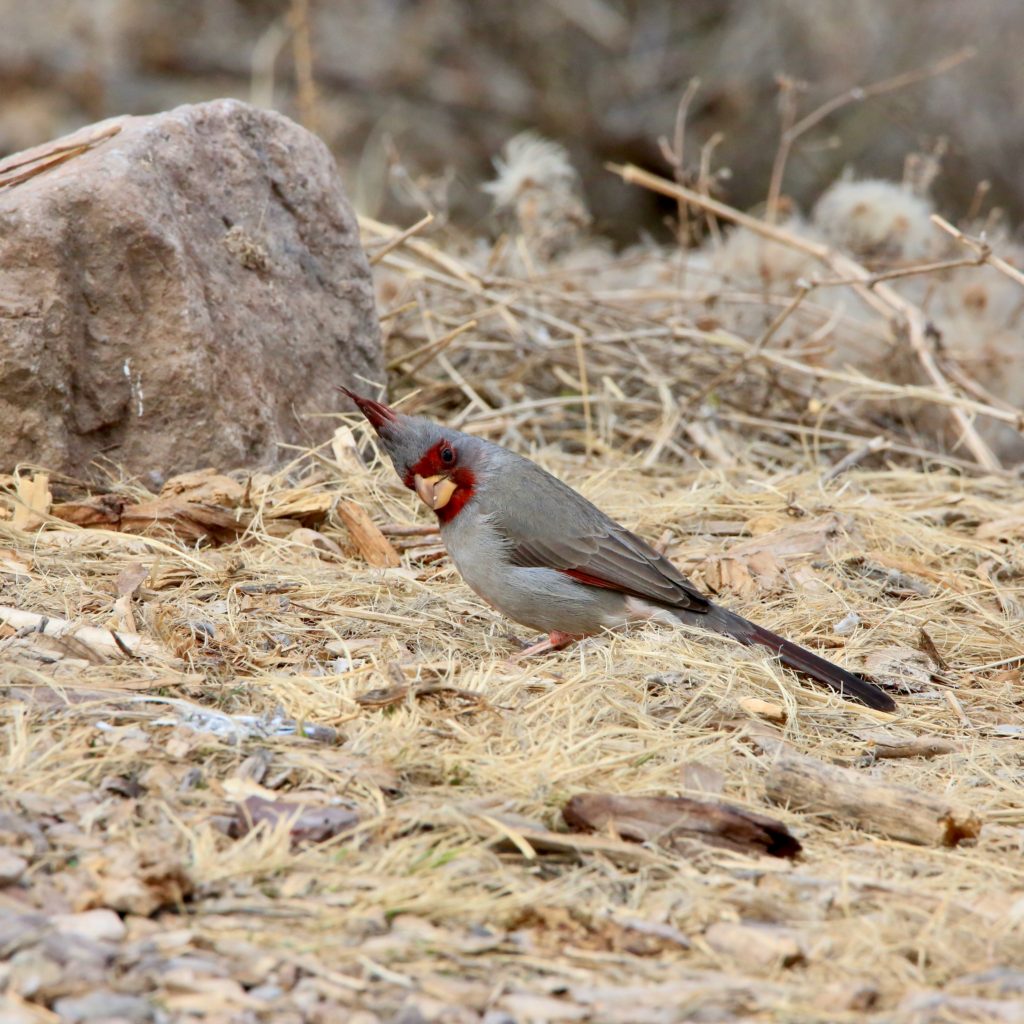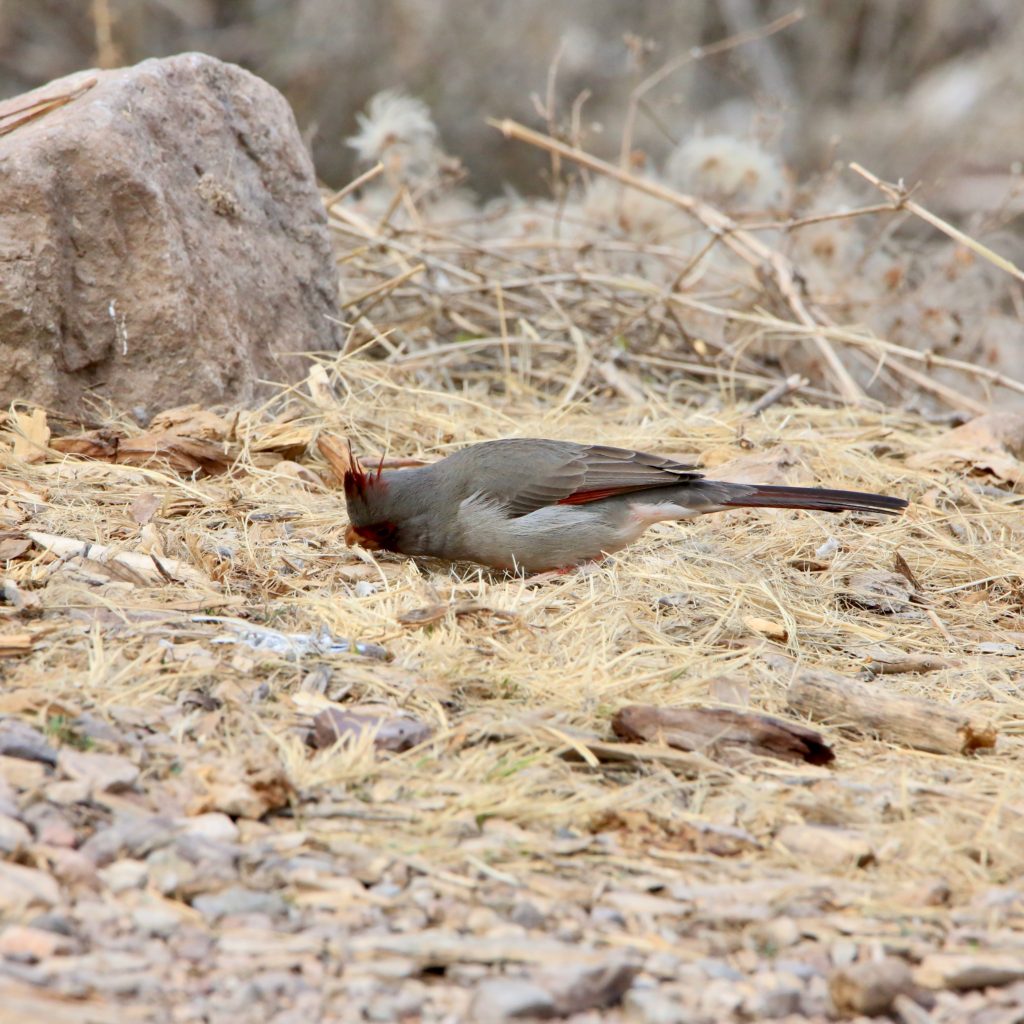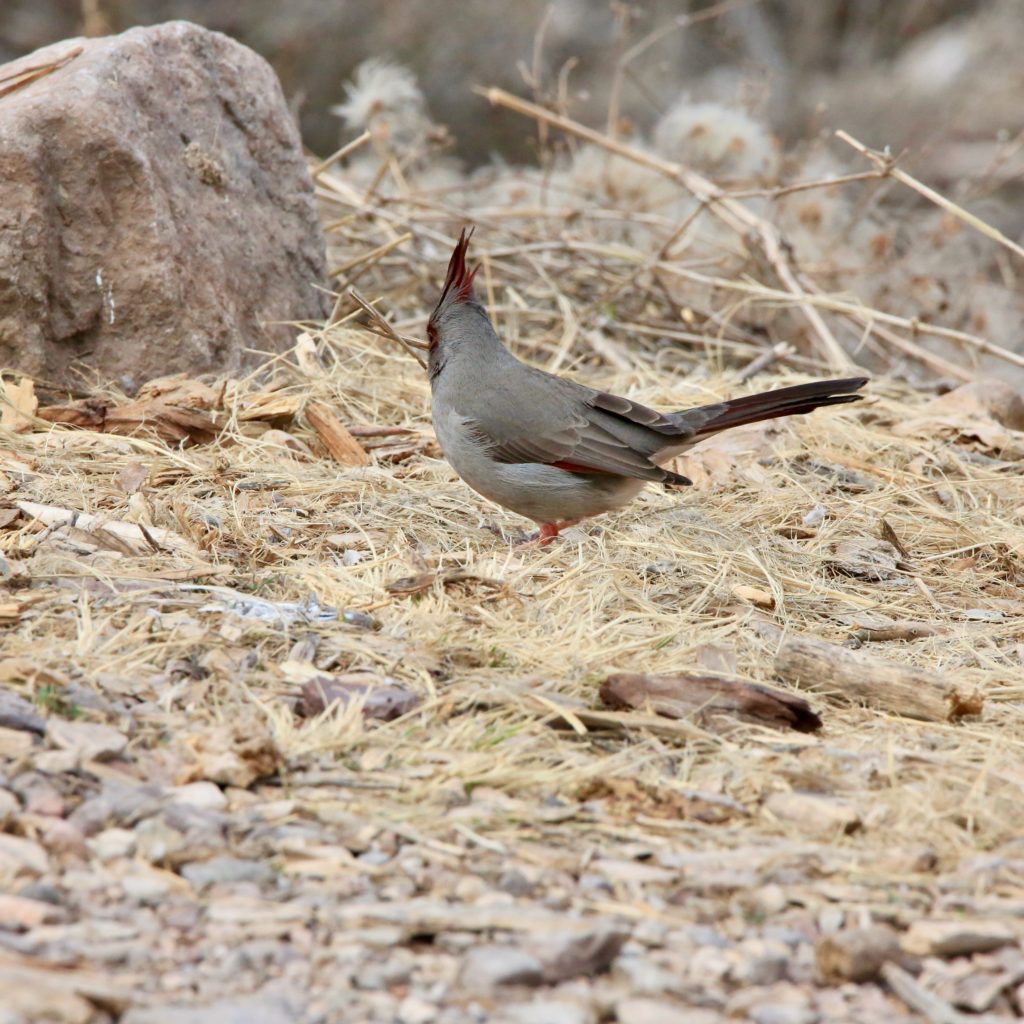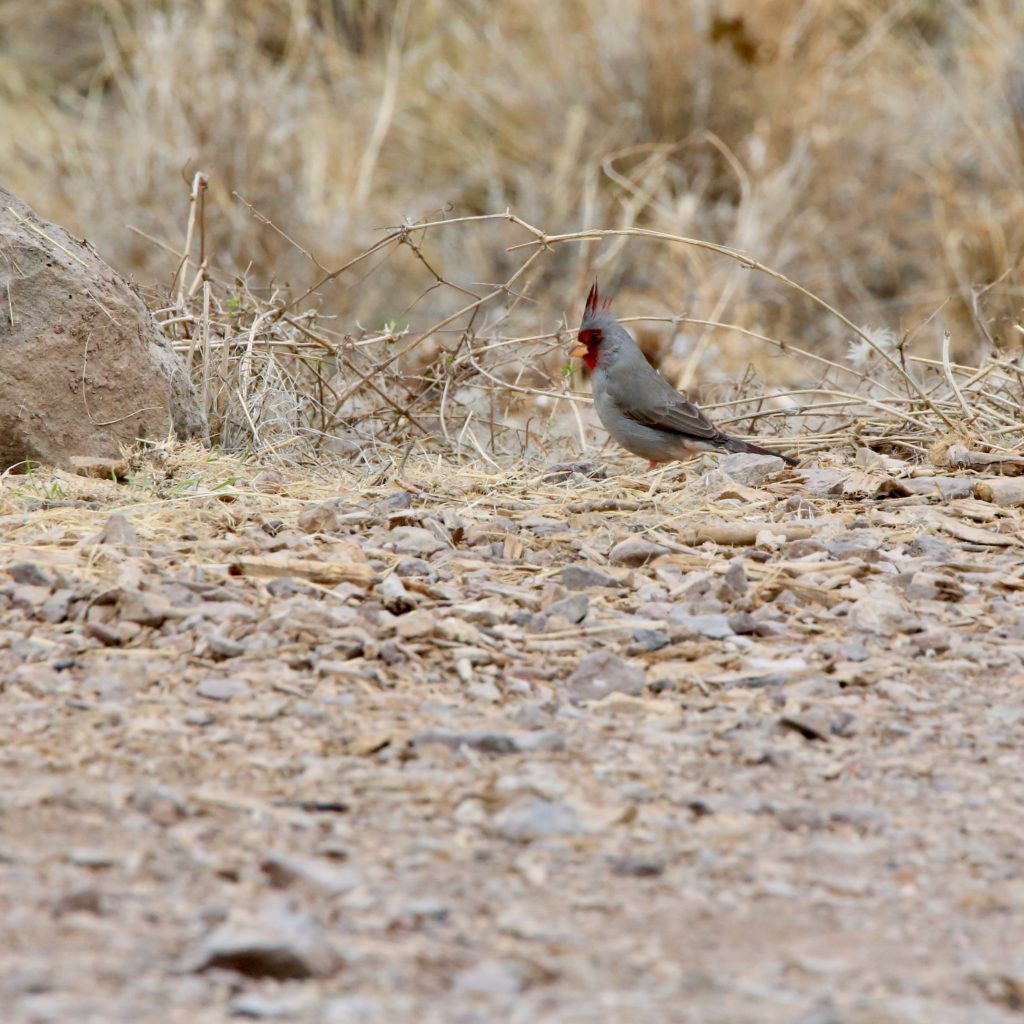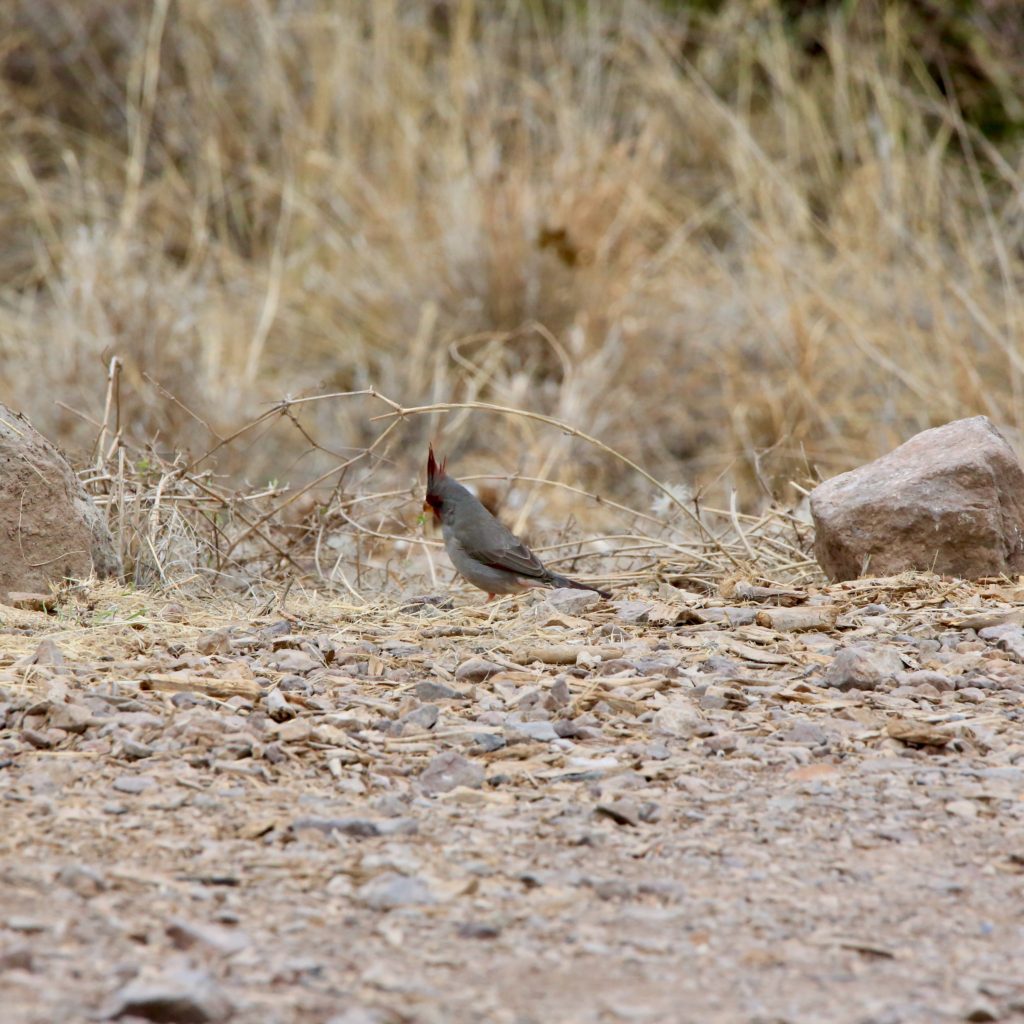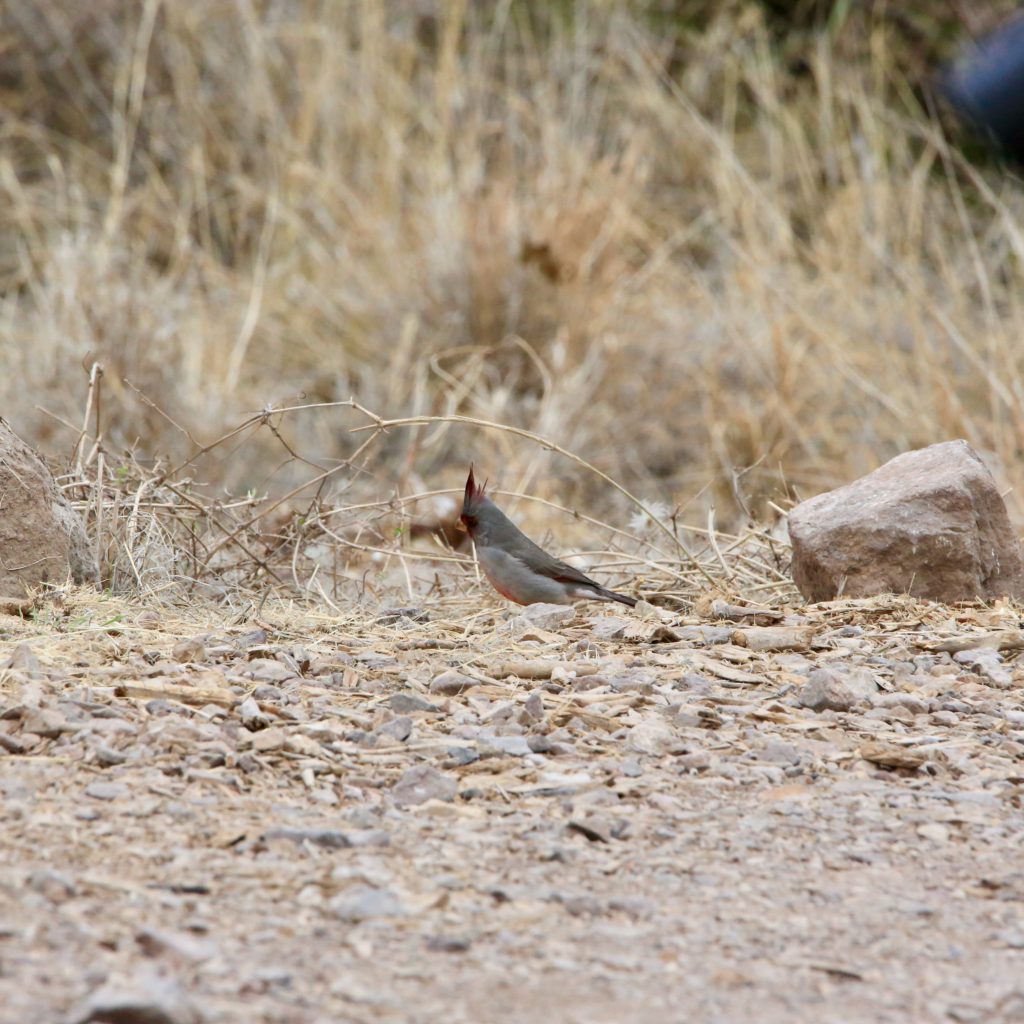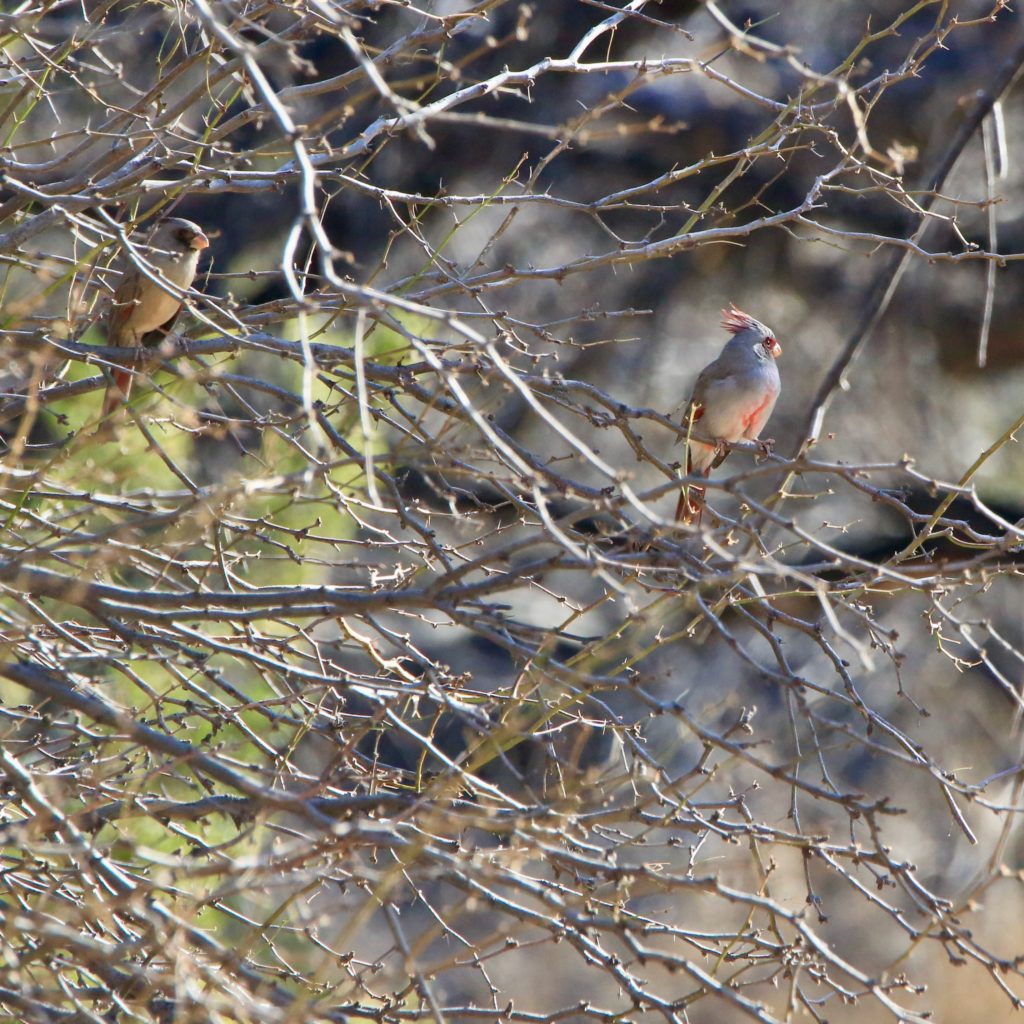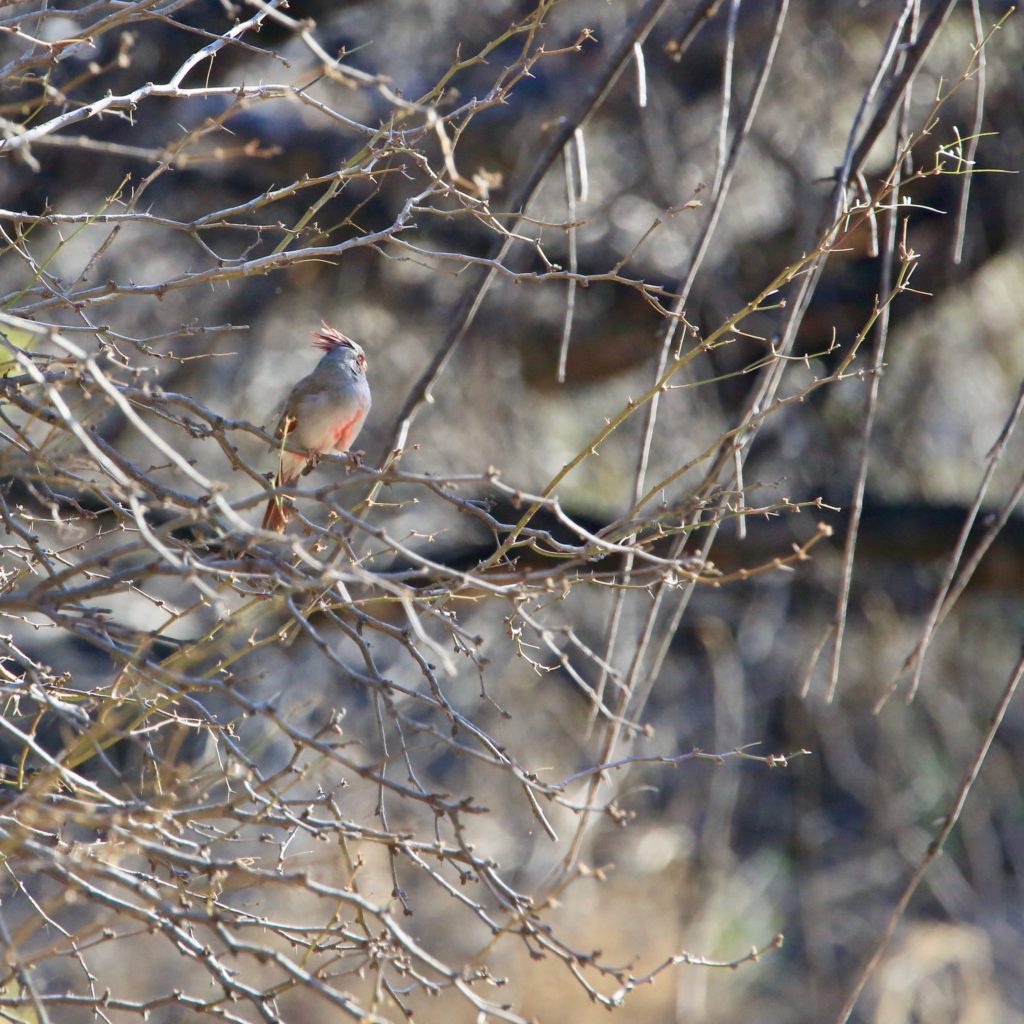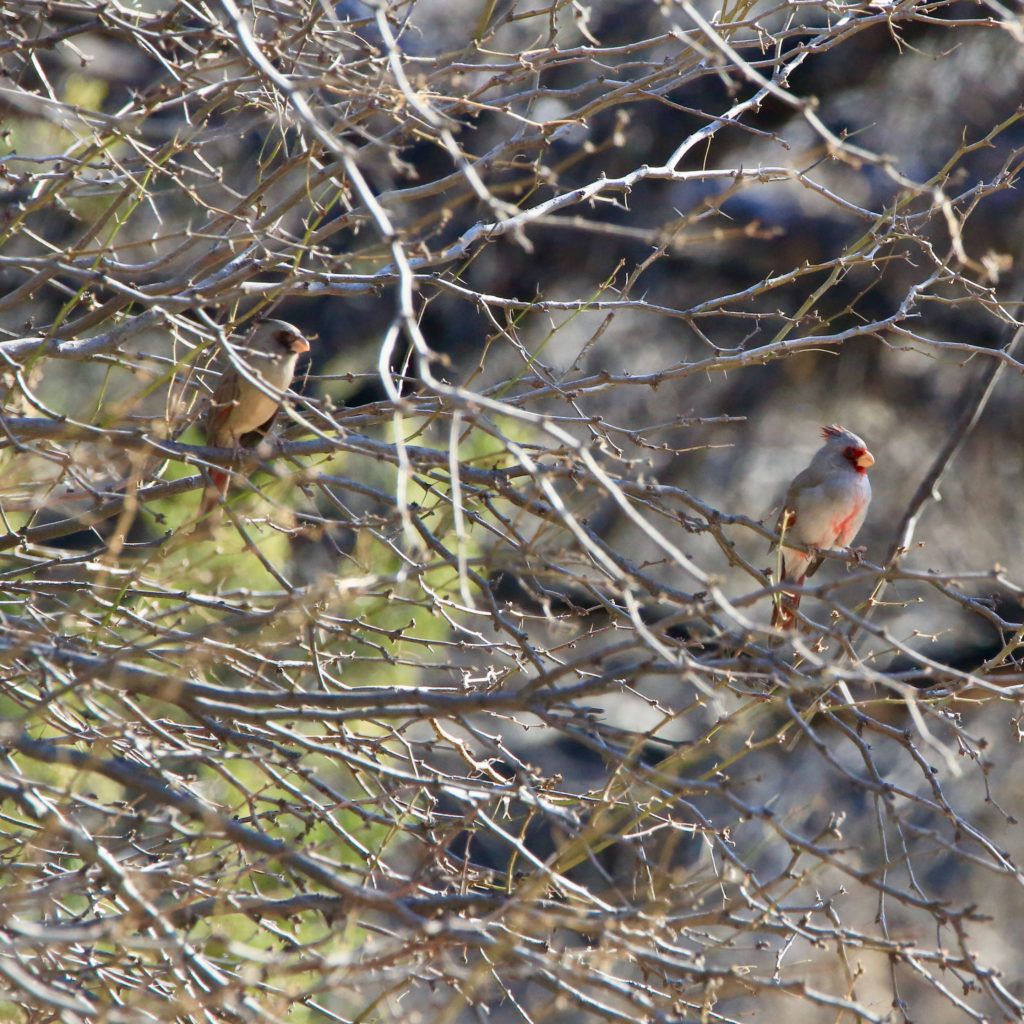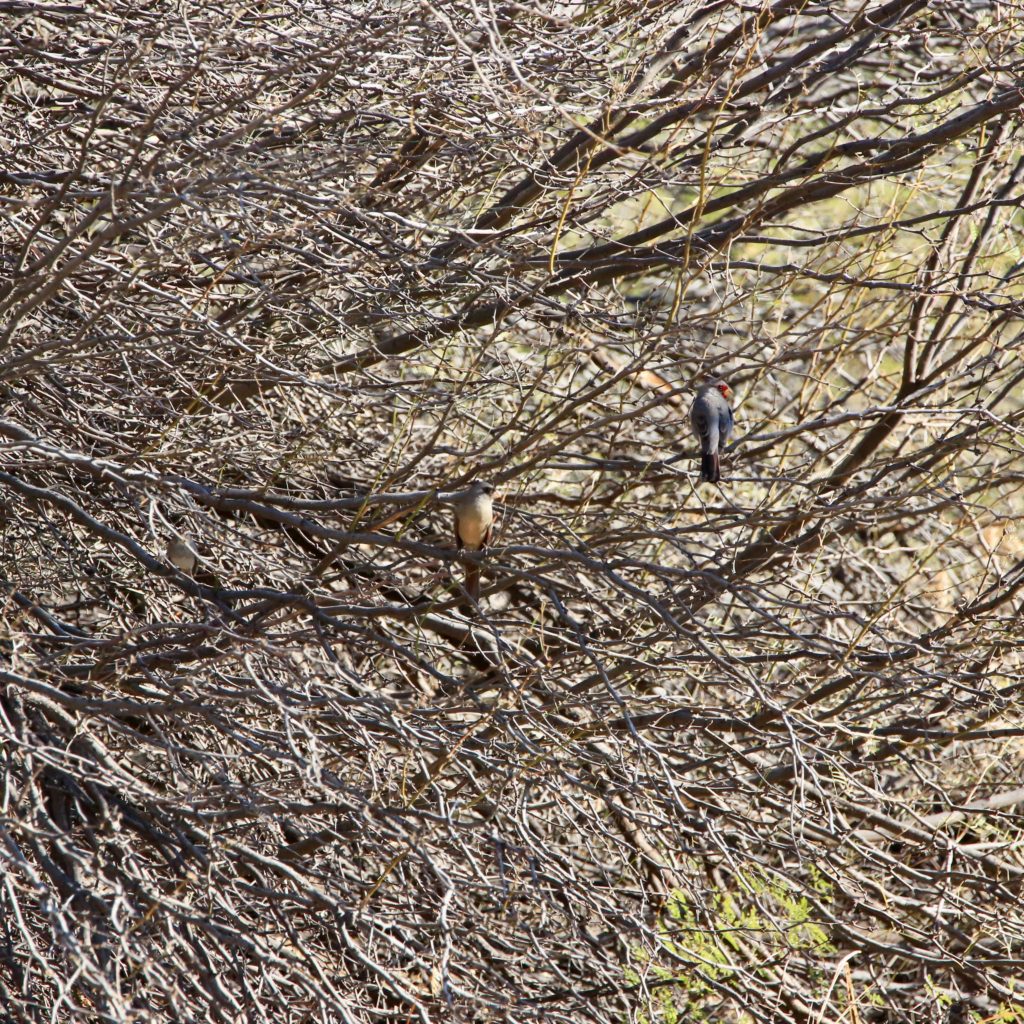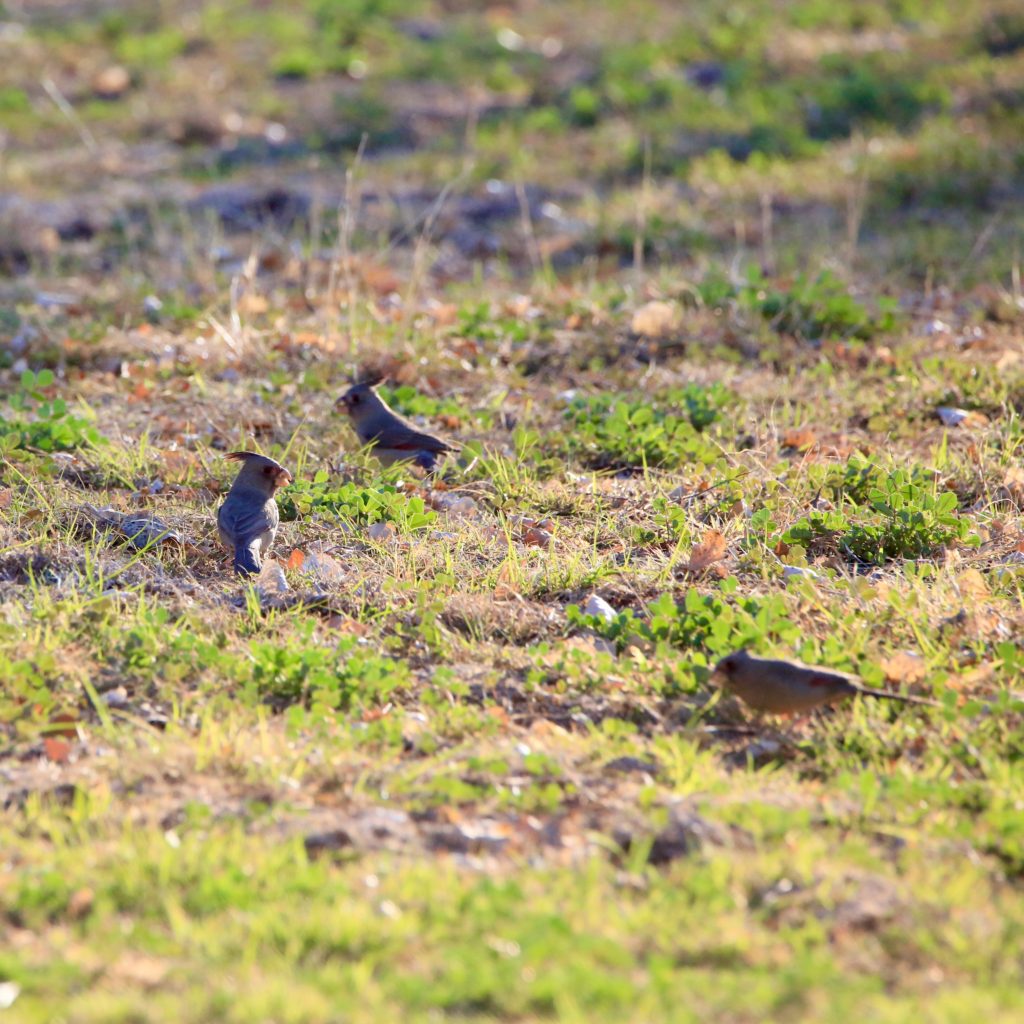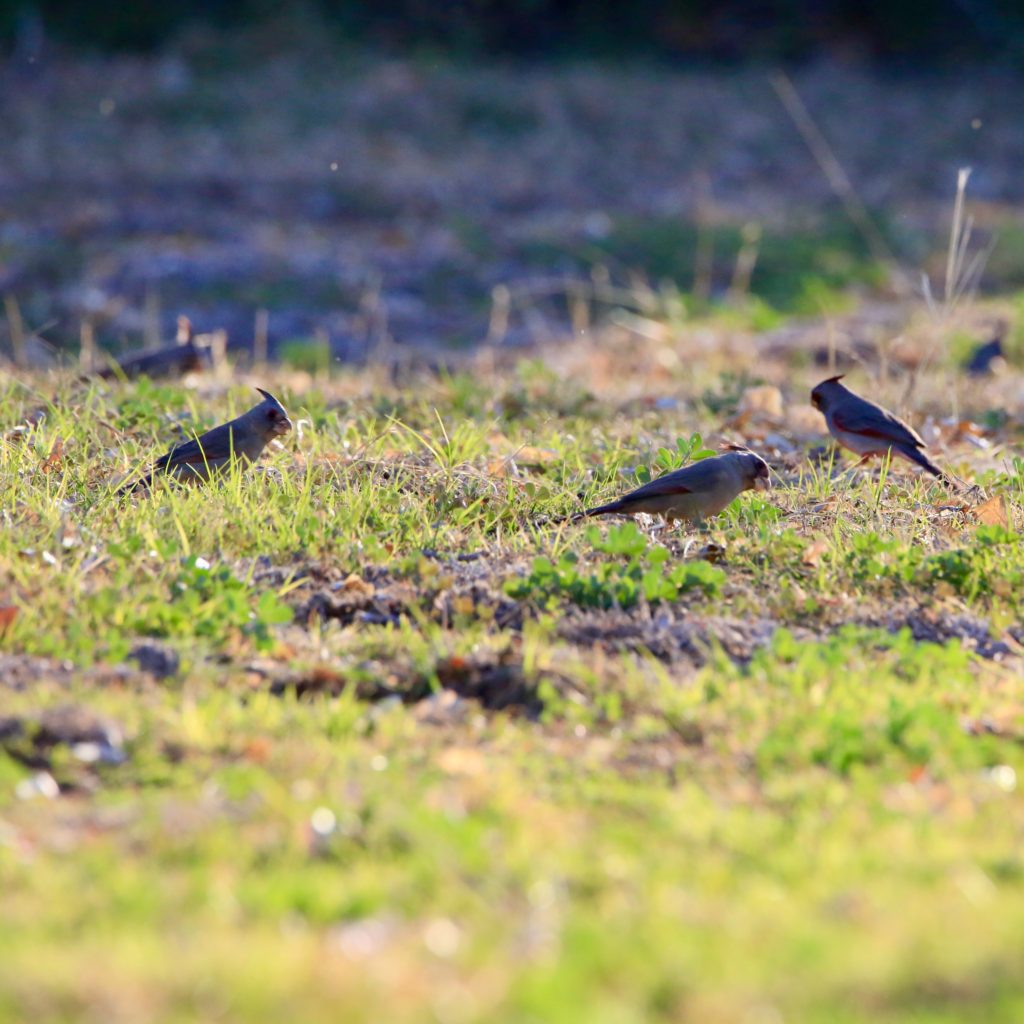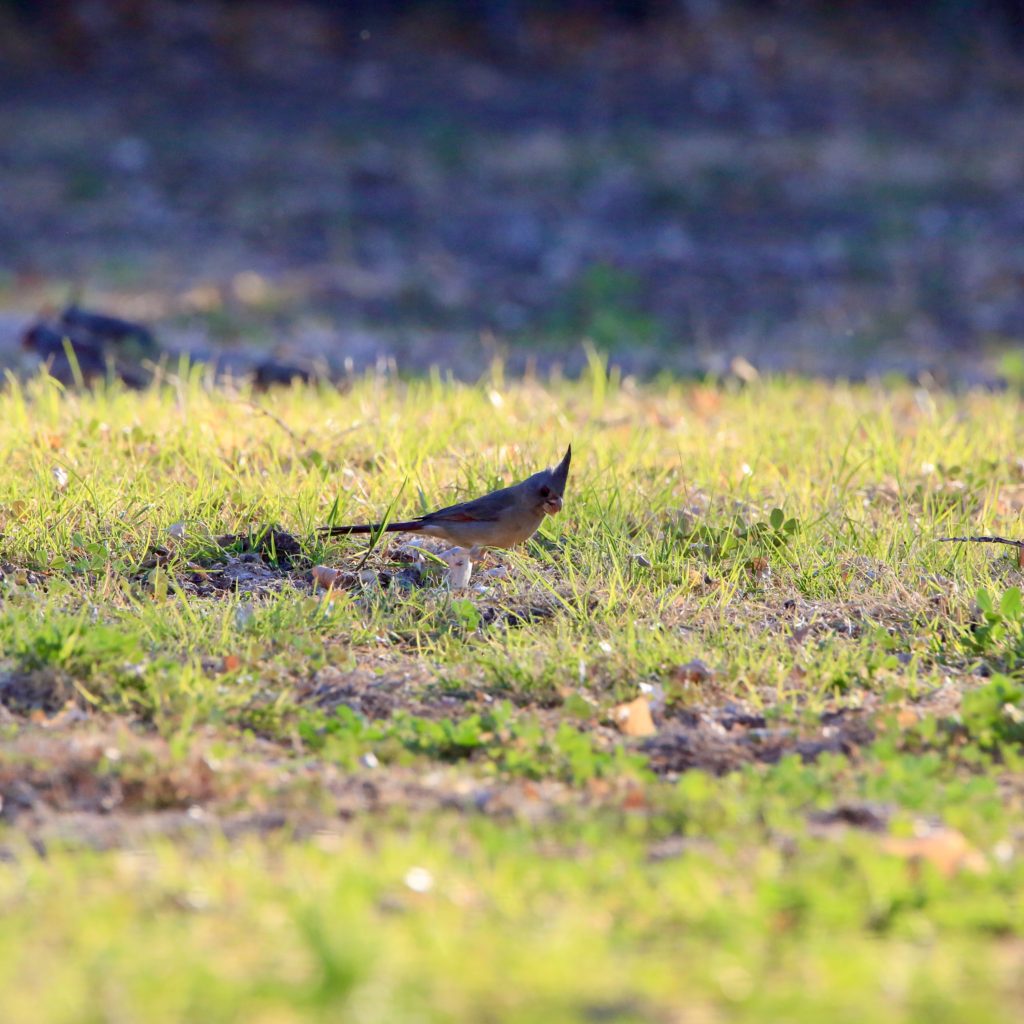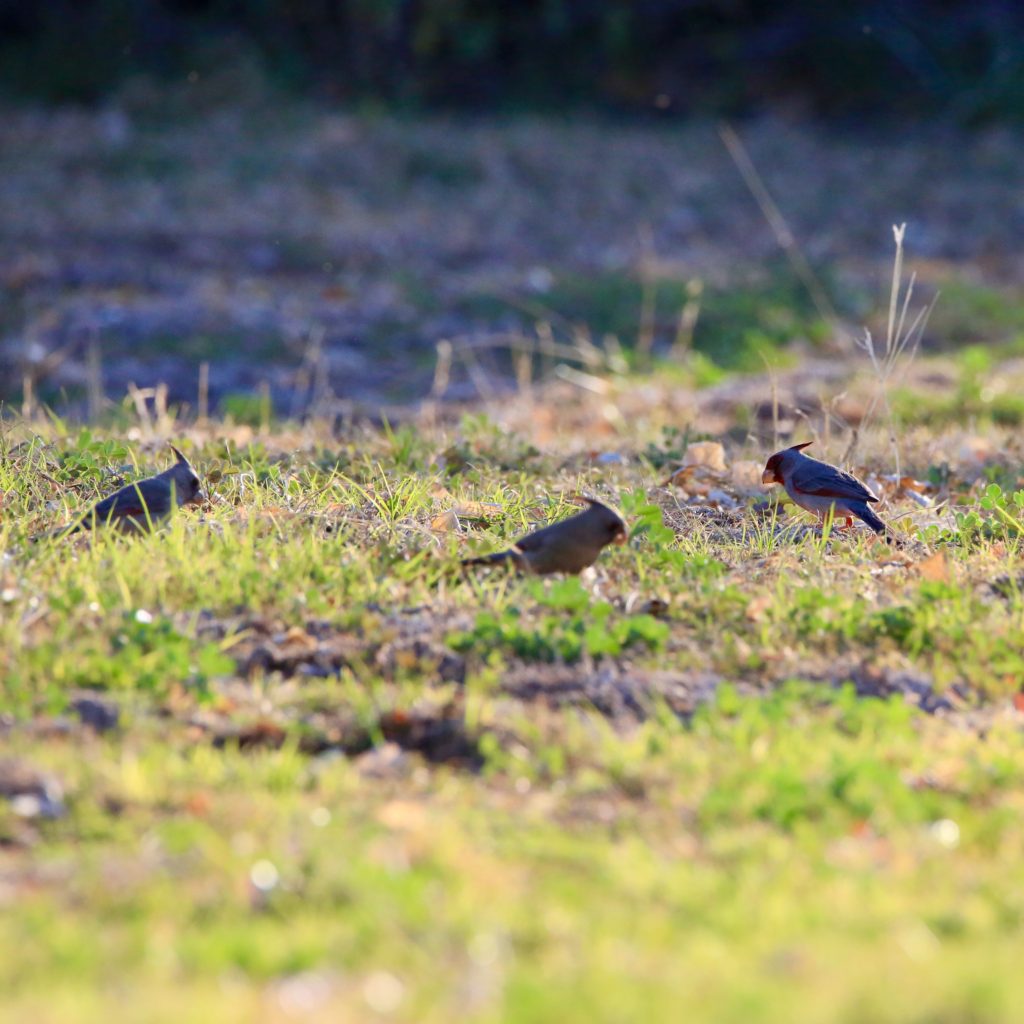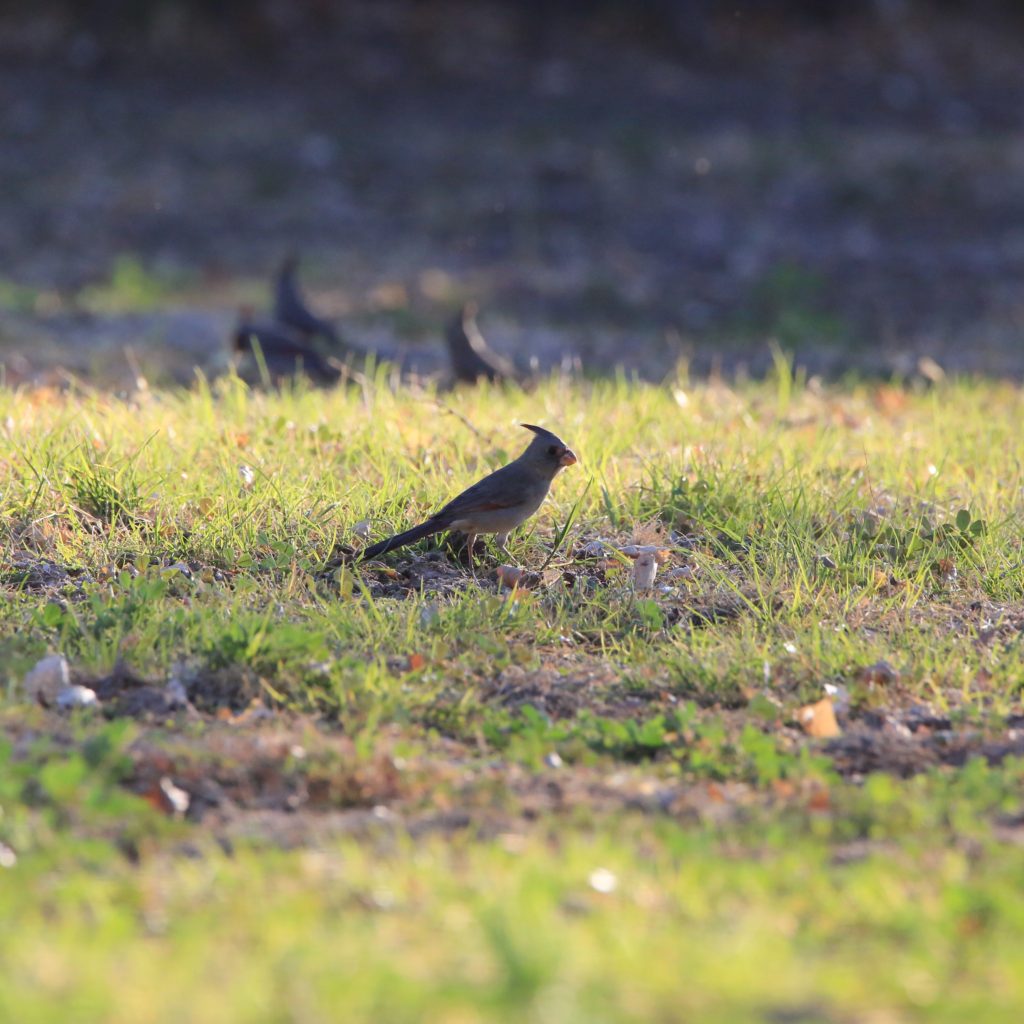
Pyrrhuloxia
A Pyrrhuloxia is a fun bird to see while bird watching. Below are some tips to help you identify Pyrrhuloxias. We have also put together a list of fun Pyrrhuloxia t-shirts, Pyrrhuloxia bird patches, birdhouses, bird feeders, binoculars, stickers, and other fun bird-watching items.
About Pyrrhuloxia
The Pyrrhuloxia is commonly referred to as the desert cardinal. It is common to sight this bird in the dry regions of the Southwest. The Pyrrhuloxia shares common characteristics with the Northern Cardinal in its behavior and chirp. The Pyrrhuloxia is a mobile bird that migrates to warmer areas during winter. The bird was named from its bill shape and the name has Greek and Latin origins.
Description and Identification
Pyrrhuloxias are medium-sized songbirds that are roughly 8.3 inches in length. They are stocky birds with tall crests, long tails, and heavy but short seed-cracking bills that have an upper edge. Adults are typically gray or grayish-brown birds with prominent flashes of red.
Males tend to play gray with red faces and crests; a red stripe runs down their breasts and joins their reddish tails. Females tend to be buffy-gray overall with less red than males. Both sexes have yellowish bills with reddish highlights on their wings. Females of this species bear the most resemblance to the females of the Northern Cardinals, both of which are distinguished by their bills.
Pyrrhuloxia Size
Wingspan: the average wingspan of a Pyrrhuloxia is 10 – 12 inches
Weight: this bird weighs an average of 33 grams.
Pyrrhuloxia Appearance
Both male and female Pyrrhuloxia have distinct plumages. The male has more red feathers while the female feathers are mostly greyish-brownish in color. Both sexes of the bird have an orange/red beak with a prominently raised crest. The offspring of these birds resemble the female birds and male offspring grow red feathers as they mature.
Pyrrhuloxia Food
These birds are omnivorous and are known to be opportunistic feeders. They primarily
forage on the ground and in the shrubbery, consuming seeds, fruits, and large insects. Their
plant-based diet consists of seeds from plants like thistle grass, dove weed, sandbur,
panicum, sorghum, pigweed, yellow foxtail, joint grass, crabgrass, wiregrass, and spurge.
Additional plant-based food includes the fruits of cacti, elderberries, and nightshades. They
also consume the nectar of select flowers, such as the blossoms of saguaro cacti. Their
insect prey typically includes grasshoppers, caterpillars, beetles, stinkbugs, cicadas, weevils,
and cotton cutworms.
The desert cardinals largely feed on seeds found on the ground. They complement their dietary needs by eating various insects, fruits, and berries. While in North America these cardinals feed on maple sap dripping from trees. Young chicks exclusively feed on insects due to their high protein content. The young chicks need a huge amount of protein when developing.
Pyrrhuloxia Habitat
These birds can be found inhabiting arid and semi-arid areas of upland deserts, mesquite
savannas, riparian woodlands, desert scrublands, farm fields with hedgerows, and
residential areas in the suburbs with nearby mesquite. Their non-breeding habitats witness a
slight shift as some flocks wander into urban habitats, mesquite-hackberry habitats, and
riparian habitats with an abundance of Arizona sycamore and cottonwood.
The desert cardinals can be found in the southern parts of the USA such as Arizona and Texas. It is not uncommon to sight flocks of these birds in Mexico.
Range and Migration
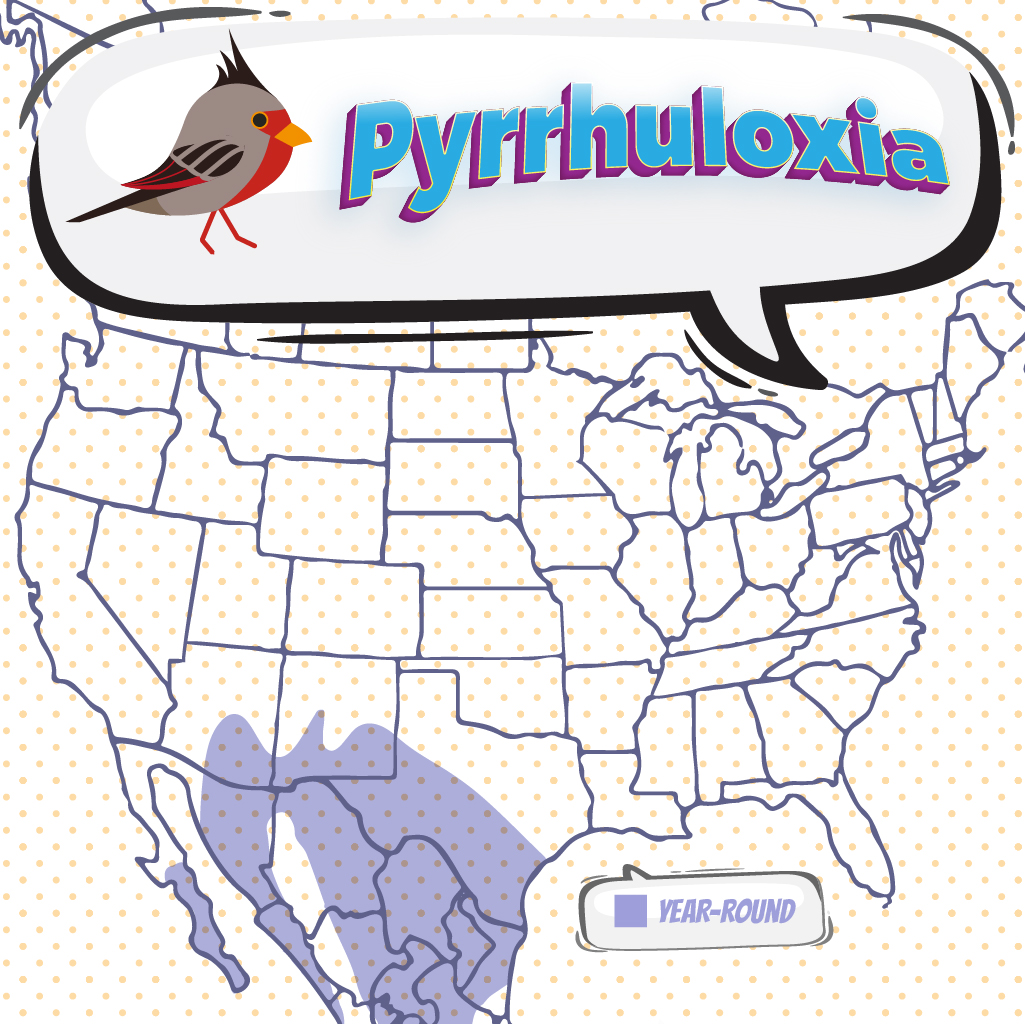
Pyrrhuloxias are cheerful and charismatic birds that are found across the south-west of the
The United States and northern Mexico. These birds are year-round residents of Arizona, New
Mexico, and Texas, and the woodland edges of northern Mexico. Their range begins from
the south-western half of Texas to roughly the southern third of New Mexico and the south-
the eastern region of Arizona, till the west to the east coast of Mexico north of the Sierra Madre del
Sur, Trans-Mexican Volcanic Belt, and the Isthmus of Tehuantepec. Although they do not
migrate, they can stray to regions north of their range occasionally. Some individuals have
been spotted as far north as Costa Mesa, California.
Pyrrhuloxia Life and Behavior
The Pyrrhuloxia typically mate with the same partner for life. During courtship, the males will gather food and feed the females. Once the breeding season comes around, the male searches and provides the female with materials to build a nest. This process lasts an average of 7 to 9 days. These birds build a well-concealed nest about 3 meters off the ground.
The female lays 2-4 eggs each season. The female incubates the eggs as the male searches for food only stopping to incubate the eggs for short periods. The eggs hatch after about two weeks and the young chick will leave the nest after 9 to 10 days.
Pyrrhuloxia Nesting
These birds select their nest sites in the dense brush like mesquite, grey thorn, elderberry, and
paloverde. Unlike the Northern Cardinals, they tend to nest in places that are more open.
The nest themselves are generally placed at a height of 5 – 15 feet off the ground, usually
on small twigs that are away from the trunk and main branches. The construction of the nest
is undertaken by the females who begin by gathering materials from the territory. A compact
cup is made of thorny twigs, strips of bark, and coarse grass. The interiors are then lined
with rootlets, strips of bark, horsehair, plant fibers, spiderwebs, feathers, and tiny plant
stems. The resulting nest is typically 3 inches across and 1.5 inches deep.
Ornithology
Bird Watching Academy & Camp Subscription Boxes
At Bird Watching Academy & Camp we help kids, youth, and adults get excited and involved in bird watching. We have several monthly subscription boxes that you can subscribe to. Our monthly subscription boxes help kids, youth, and adults learn about birds, bird watching, and bird conservation.
Bird Watching Binoculars for Identifying Pyrrhuloxias
The most common types of bird-watching binoculars for viewing Pyrrhuloxias are 8×21 binoculars and 10×42 binoculars. Bird Watching Academy & Camp sells really nice 8×21 binoculars and 10×42 binoculars. You can view and purchase them here.
Pyrrhuloxia T-shirts
If you love the Pyrrhuloxia you should purchase a Bird Watching Academy & Camp T-shirt. To help support bird conservation we donate 10 percent to bird conservation activities.
Pyrrhuloxia Iron On Patches
Kids, Youth, and Adults love to collect our Bird Watching Academy & Camp iron-on patches. Our bird-watching patches help you keep track of the birds you have seen and identified. You can also display the patches on our Bird Watching Academy & Camp banners.
The Pyrrhuloxia is a great iron-on patch to start your collection with. The patches are durable and can be sewn on or ironed on to just about anything.
Pyrrhuloxia Stickers
Stickers are a great way for you to display your love for bird watching and Pyrrhuloxia. We sell a monthly subscription sticker pack. The sticker packs have 12 bird stickers. These sticker packs will help your kids learn new birds every month.
Bird Feeders for Pyrrhuloxia
There are many types of bird feeders. Here are our favorite bird feeders for your backyard. We use all of these bird feeders currently. Kids will have a great time watching birds eat at these bird feeders. Using this collection of bird feeders will provide a wide variety and many types of birds.
Best Bird Houses for Pyrrhuloxia
There are many types of bird houses. Building a bird house is always fun but can be frustrating. These 4 bird houses have become our favorites. Getting a bird house for kids to watch birds grow is always fun. We spent a little extra money on these bird houses but they have been worth the higher price and look great.


